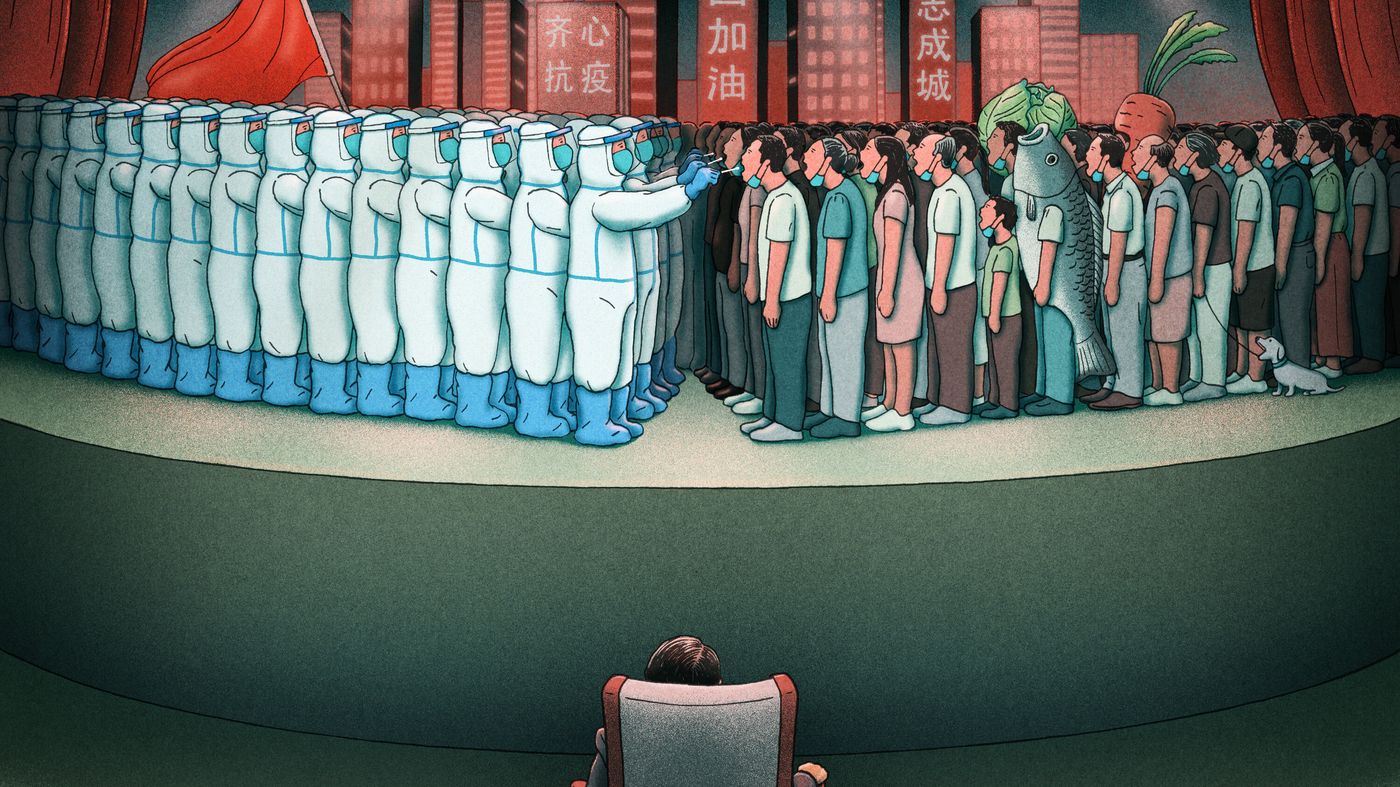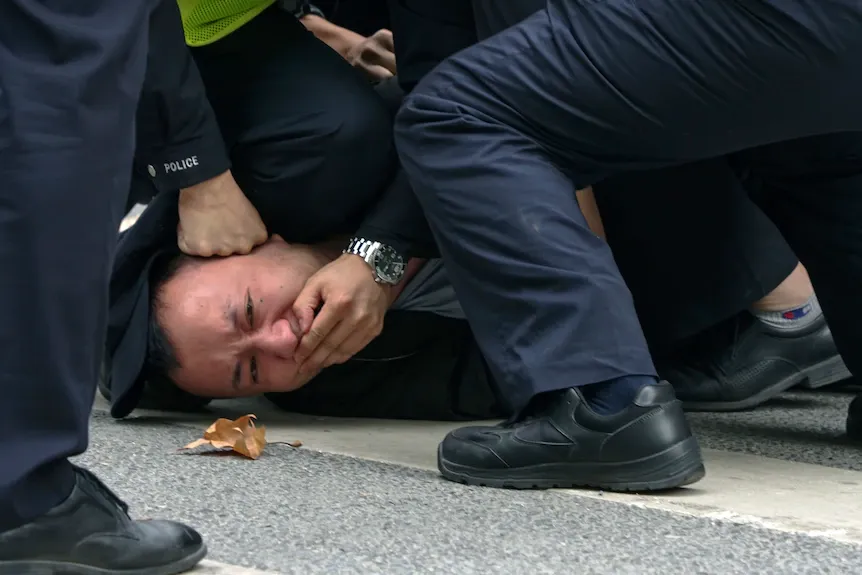
政治与国际关系研究,人文社科写作。 Twitter:https://twitter.com/22HomoPoliticus Substack中英双语专栏:https://substack.com/@ignatiusdhlee?utm_source=user-menu
China Issue | The annual production capacity of ibuprofen is huge, why can’t you buy it?
By Ignatius DH Lee
The public health emergency mode of excessively centralized and unified management and the pharmaceutical industry guided by the idea of planned economy are the root causes of China's huge production capacity but still a large shortage of emergency medicines.
At the beginning of December, the Chinese government suddenly and without warning completely lifted the lockdown, which quickly caused a large-scale infection of more than one billion people. The Beijing authorities did not lift the blockade step by step as previously guessed by the outside world, but suddenly opened the floodgates to release the flood, resulting in a near total collapse of society.
From extreme blockade to extreme "laying flat", Chinese society seems to be repeating the ills of "death if you control it, and chaos when you let it go".
As the pandemic spread across the population, people were surprised to see critical shortages of common pain relievers like ibuprofen, cold remedies and fever reducers.

As the world's largest producer and exporter of ibuprofen, China's leading enterprises, Xinhua Pharmaceutical and Hendy Pharmaceuticals, have an annual production capacity of 8,000 tons and 3,500 tons respectively, excluding the other 26 pharmaceutical companies that produce ibuprofen. The two companies can supply 38.3 billion ibuprofen to the market. According to the estimate of "21st Century Business Herald", if the demand in the second half of this year is twice that of the first half of this year, and the estimated amount of this year is three times that of last year, only half of the production capacity of these two companies can meet the current market demand.
In addition, according to China News Weekly citing the industry report of CEI Zhisheng, in 2020, 2021 and the first half of 2022, the supply of ibuprofen raw materials in China will be about 14,000 tons, 14,400 tons, and 7,400 tons respectively. In the past three years, the demand for raw materials in the Chinese market was only about 1615 tons, 1723 tons and 1463 tons, and the total supply was almost 8 to 9 times the total domestic demand; even if the export share was removed, the domestic supply of ibuprofen The quantity should also be sufficient.
For a while, doubts about "why the production capacity is huge but a drug is hard to find" flooded Chinese Internet platforms such as Weibo, WeChat, Zhihu, and Douyin.
In fact, many media have given quite convincing explanations from different aspects. For example, "21st Century Business Herald" believes that the production capacity of raw materials is sufficient, but there is a large gap, which requires a certain period of preparation; in addition, the production lines of some pharmaceutical companies are "on hold for various reasons" and require a certain period of time to resume production.
"China News Weekly" said that pharmaceutical companies have encountered multiple obstacles in "capacity adjustment", and even workers have experienced large-scale infections. It will take some time to fully activate production capacity at full capacity. It is also known that pharmaceutical companies need time to coordinate the supply chain and sales chain, and it also takes time for drugs to be produced from raw materials to transported to be processed into finished drugs.
The above explanation seems to be very convincing, but this kind of persuasion is very superficial, it can be said that it is nowhere near itching. This article will spread out the secrets of the Chinese media.

The crux of the problem is the all-powerful government monopoly governance model in response to public health emergencies and the abnormal industrial structure of China's pharmaceutical industry.
First, China's pharmaceutical industry reflects a typical planned economy model. This is not only reflected in the "Pharmaceutical Industry Development Plan" (referred to as the "Five-Year Plan") released every five years. For example, the "13th Five-Year Plan" and "14th Five-Year Plan" directly affect the treatment of Wuhan pneumonia and its variant viruses. , It is also reflected in the guidance documents for the reform of the pharmaceutical industry, such as the most recent "Several Opinions on Further Reforming and Improving Policies for the Production, Distribution and Use of Drugs" issued in 2017.
The most typical feature of the planned economy model is that an omnipotent government directly intervenes and plans the ecology and structure of an entire industry. The government not only specifies the annual growth target of the pharmaceutical industry, but also directly intervenes in all aspects of the industry, which is unthinkable in Western democracies where the market economy dominates.
Under this model, the Chinese government aims to create an "urban and rural pharmaceutical distribution network with large backbone enterprises as the main body and small and medium-sized enterprises as supporting supplements." This industrial structure is completely the result of the highly centralized state monopoly capitalist economic model. Reprint. Under the intervention of this model, not only the production capacity of leading enterprises is directly regulated by the state (rather than market demand), but the production capacity of small and medium-sized enterprises is struggling under the unfair market monopoly mechanism.
For example, as far as the two leading companies in the manufacture of ibuprofen, Xinhua Pharmaceutical (state-owned holding) and Hendi Pharmaceutical (private), the two companies occupy an absolute market share, and other small and medium-sized enterprises are completely disproportionate in the scale of ibuprofen pharmaceuticals . This deformed planned economic model can neither guarantee the maximum production capacity of leading enterprises, nor can it encourage Chinese medicine enterprises to independently expand their production capacity.
No matter when a sudden public health crisis breaks out, the production capacity of the pharmaceutical industry, which is over-concentrated and directly intervened by the government, cannot effectively cope with the sudden surge in drug demand. This not only directly affects China's domestic pharmaceutical market, but also affects other countries that are overly dependent on China's pharmaceutical industry.

Second, China's governance model for responding to public health emergencies reflects an excessive superstition of an all-powerful government. Since the outbreak of SARS in 2003, the Chinese government has formulated the "Regulations on Emergency Response to Public Health Emergencies", with the purpose of "establishing a unified, efficient and authoritative emergency response mechanism for public health emergencies."
In this model, “state agencies prevent, warn, monitor and deal with various social dangers, ignoring or even excluding the role of non-governmental public organizations, various enterprises or institutions, and individuals in emergency management. Citizens and social organizations Adapted and marginalized in emergency management."
This epidemic prevention model concentrates absolute power in Beijing. After the Xi Jinping government came to power, this absolute power has been further strengthened. Decision-making command, information coordination and release, resource scheduling, and social monitoring are all concentrated in the central government.
In contrast, the Western epidemic prevention model represented by the United States lacks this overly centralized and unified form of intervention. The greatest flexibility of the Western epidemic prevention model is to avoid the "one-size-fits-all" (one-size-fits-all) phenomenon of the over-centralized unified model. Few democratic countries have leaders who "personally command and personally deploy" a unified national epidemic prevention policy, and important decision-making power is delegated to local governments, non-governmental organizations, and scientific research institutions, and the central government only assumes a limited assisting role.
The "one size fits all" phenomenon is not only vividly manifested in the "zero clearing policy", but also causes many strange social phenomena to appear frequently in Chinese society. For example, large-scale gatherings of people are clearly prohibited, but tens of thousands or even hundreds of thousands of people often line up in various parts of China The scene of doing nucleic acid.
Among them, the production, distribution and deployment of medicines are also affected by this "one size fits all" model. To many people's surprise, China's emergency drug reserves are far from meeting the basic market demand after implementing the three-year "zero-clearing policy".
When there is a shortage of medicines, many people simply attribute it to "crash buying"-thinking that "crash buying" is the root cause of the shortage of common painkillers such as ibuprofen, cold medicines and antipyretics. This is exactly like the "Urumqi fire" that caused heavy casualties and was blamed by Urumqi officials on the "weak self-defense and self-rescue ability of some residents".
Since the production of drugs such as ibuprofen needs to be carried out in accordance with the government's "Five-Year Plan", if the government does not instruct to increase related production, even leading companies dare not make production reserves based on their own market estimates. This may be able to effectively avoid the imbalance between supply and demand in normal times, but after public health emergencies, instead of strengthening the autonomy of pharmaceutical companies in the market, the government has firmly grasped the pharmaceutical industry as a strategic material guarantee.
Furthermore, when the government faced large-scale anti-blockade demonstrations across the country, it suddenly and quickly "one size fits all" completely lifted the blockade in a short period of time, instead of lifting it step by step and orderly as suggested by foreign epidemic prevention experts. The boundless "zero-clearing policy" has no end in sight for the pharmaceutical industry, which makes it impossible for pharmaceutical companies to accurately predict when the government will adjust the epidemic prevention policy and the possible drug shortages that will follow.
The sudden and complete unblocking is tantamount to catching pharmaceutical companies by surprise. This is not only because the vast majority of companies that produce ibuprofen and other common painkillers, cold medicines, and antipyretics will be severely disrupted by the "zero clearing policy" during the large-scale blockade period in 2022, or because the distribution of medicines is restricted by local authorities. The epidemic prevention checkpoints hindered, or because the market demand was abnormally suppressed by the sealing policy, some production lines were reduced or even stopped, so that after the sudden release of the sealing control, the production reserve and production recovery efforts were obviously insufficient. It is also because of the sudden unblocking that quickly caused a large number of workers to be infected, so that it was impossible to restore the normal production scale in a short period of time.
These are the places that Chinese media such as "21st Century Business Herald" and "China News Weekly" keep secret. When investigating and reporting on the shortage of medicines, the Chinese media deliberately avoided expressing the serious consequences of the "zero-clearing policy" and the sudden and complete unblocking.

Like my work?
Don't forget to support or like, so I know you are with me..
Comment…